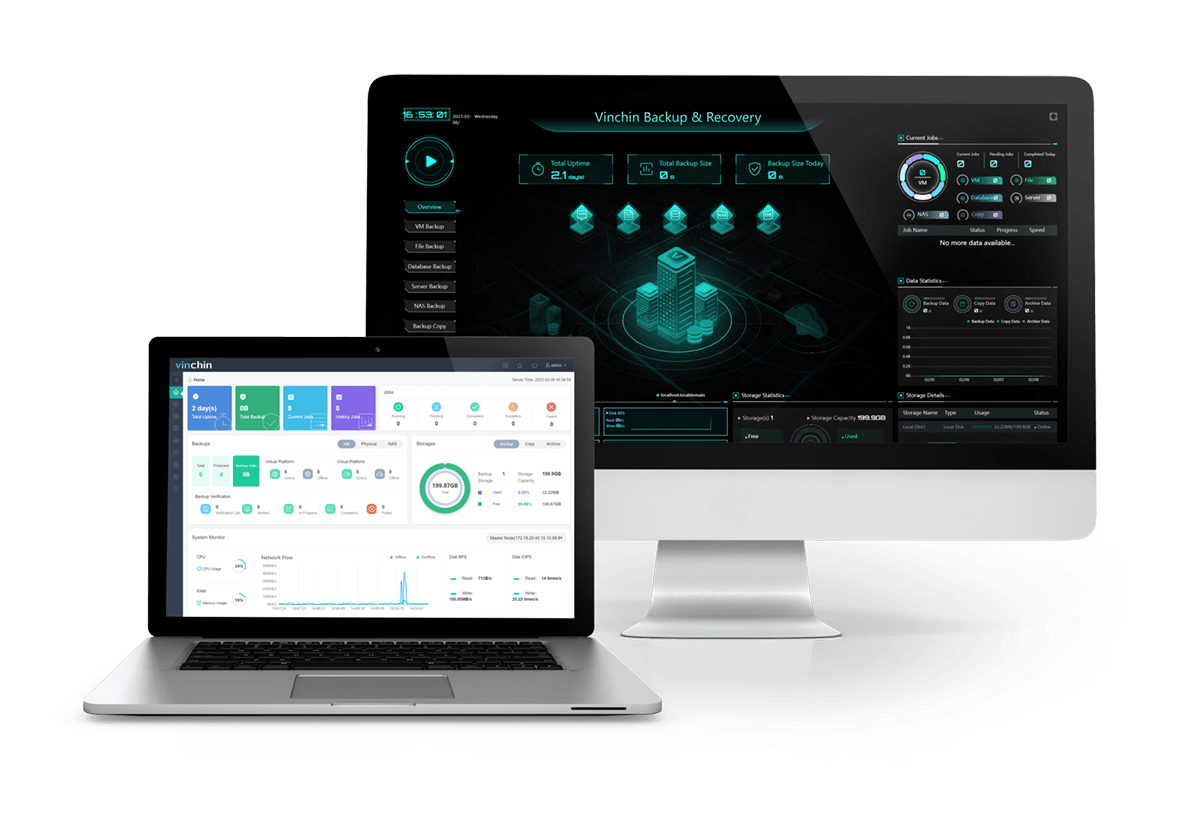-
The significance of a disaster recovery plan
-
Characteristics of disaster recovery construction in the financial industry
-
Three modes of disaster recovery center construction
-
Challenges of disaster recovery switchover
-
How to build a financial disaster recovery plan?
-
Choosing a professional disaster recovery solution
-
Conclusion
In recent years, the level of informatization in small and medium-sized financial enterprises has been continuously increasing. Information systems have become an indispensable part of their business management and operations. With the widespread adoption of financial informatization, the security of financial data has become particularly important. In the event of a disaster at a financial enterprise’s data center, it could lead to significant economic losses, damage the company’s reputation, and even disrupt financial order. Therefore, safeguarding this data security “lifeline” presents the greatest challenge for financial enterprises on their path to digital transformation.
The security of financial data is of paramount importance. According to statistics, financial institutions suffer losses equivalent to 50% of their daily turnover within two days after their data systems are breached. If information systems cannot be restored within two weeks, 75% of companies experience business interruptions, and 43% of companies are unable to reopen. Companies without disaster recovery measures face a bankruptcy rate of 60% within 2-3 years after a disaster strikes. Hence, establishing disaster recovery capabilities becomes the ultimate barrier for ensuring stable business operations in the financial industry.
The significance of a disaster recovery plan
1. Ensuring Business Continuity
In the realm of financial industry, business continuity holds paramount importance. Failure to swiftly recover operations during a disaster can result in substantial losses for financial institutions, encompassing financial setbacks and reputational damage. A well-crafted disaster recovery plan guarantees that financial institutions can maintain stable business operations in times of emergency, thereby mitigating losses and risks.
2. Compliance with Regulatory Requirements
Strict regulatory oversight governs the financial industry, and a disaster recovery plan stands as an indispensable compliance requirement. Financial institutions must establish appropriate disaster recovery measures in accordance with regulations and conduct periodic testing and assessments to ensure compliance with regulatory standards.
3. Enhancing Customer Confidence
Banks and other financial institutions rely heavily on customer relationships, as customer confidence and loyalty directly impact business growth. A disaster recovery plan serves to reassure customers that financial institutions possess the capabilities to safeguard their interests during times of disaster and ensure that their assets and transactions remain unduly unaffected.
Characteristics of disaster recovery construction in the financial industry
1. Complex data system: The financial industry demands high levels of disaster recovery. The intricate user ecosystem, technological structure, and geographically dispersed business operations in this sector significantly amplify the complexity of the disaster recovery system. Furthermore, stringent security requirements prevail in the financial industry, where any security vulnerability can have severe consequences.
2. Emergency recovery: The development of disaster recovery in the financial industry requires thorough consideration of the feasibility of emergency recovery and the scale of potential disasters. Extensive planning is necessary to ensure that the disaster recovery system possesses sufficient recovery capabilities. Moreover, multiple recovery plans should be devised to address various disaster scales and multiple failures caused by equipment malfunctions.
3. Diffusion of disaster impacts: When constructing disaster recovery systems in the financial industry, it is essential to consider the diffusion of disaster impacts. The complex systems specific to the financial industry can potentially affect individuals, equipment, and systems. Potential risk propagation can expand the scope of the disaster’s impact.
4. Legal requirements: Strengthening legal risk management is crucial in disaster recovery construction within the financial industry. As the financial industry deals with personal information, contractual documents, and account balances, the information security requirements are exceptionally high. Therefore, legal risk considerations must be thoroughly contemplated throughout the disaster recovery construction process.
Three modes of disaster recovery center construction
The core of disaster recovery center construction lies in establishing a data backup center to ensure business continuity and achieve long-term stability in enterprise operations. Currently, there are three main modes of disaster recovery center construction: same-city disaster recovery center, remote disaster recovery center, and dual-site three-center.
1) Same-City Disaster Recovery Mode
This mode involves establishing a disaster recovery center and a production center in the same city, with a recommended distance between the two locations of generally not less than 20 kilometers. Being in the same city allows for the implementation of both synchronous and asynchronous backup technologies. This mode offers the lowest investment cost, the fastest disaster recovery speed, and a high level of data protection, enabling timely and effective handling of most disaster situations. However, it may not be able to address regional disaster risks.
2) Remote Disaster Recovery Mode
In this mode, a disaster recovery center and a production center are established in different cities or regions, with a recommended distance of over 200 kilometers between them. Being in different cities usually limits the implementation to asynchronous backup. Although this mode involves higher investment costs and slightly lower disaster recovery speed and data protection capabilities, it can handle a wide range of disaster risks.
3) Dual-Site Three-Center Mode
This mode consists of a production center, a same-city disaster recovery center, and a remote disaster recovery center. In daily operations, the production center uploads a significant amount of business data in parallel to both the same-city and remote disaster recovery centers for backup. This mode has the highest investment cost but combines the advantages of the previous two modes.
Challenges of disaster recovery switchover
1) Achieving switchover and reversion within the defined RTO (Recovery Time Objective)
The increasing complexity of business systems and the number of servers pose challenges during the switchover process. The growing number of scripts/commands required for the switchover prolongs the time taken, which may exceed the defined RTO.
2) Configurable switchover software is needed to handle complex scenarios during the switchover process
As organizations expand their IT infrastructure and the design of IT architecture evolves, switchover scenarios become increasingly intricate. Switchover software needs to be adaptable to handle complex scenario configurations.
3) Ensuring timely revision of the disaster recovery plan to maintain its freshness and accuracy
The disaster recovery plan plays a crucial role in the switchover system. It outlines the steps required to swiftly recover the system to an operational state in the event of an unexpected incident. Therefore, maintaining and updating the plan promptly is essential to ensure its freshness and accuracy.
4) Establishing clear roles and responsibilities during the switchover process for orderly and smooth execution
During rehearsals or actual switchover events, it is vital to have clear coordination and ensure smooth progress. All involved personnel should have real-time updates on the switchover execution progress, mitigating any potential “chaotic” situations caused by inter-team collaboration issues at the switchover site.
How to build a financial disaster recovery plan?
1. Develop a comprehensive disaster recovery strategy and plan, encompassing risk assessment, business impact analysis, and resource requirement analysis.
2. Establish a resilient disaster recovery team with a clearly defined organizational structure and responsibilities, ensuring that team members possess the requisite skills and knowledge.
3. Construct robust disaster recovery facilities and equipment, including backup servers, storage devices, and redundant networks, subject to regular testing and maintenance.
4. Formulate data backup and recovery strategies to safeguard the security and recoverability of critical data, incorporating regular data backups and validations.
5. Devise an emergency communication plan and conduct regular drills and testing to ensure seamless communication during critical situations.
6. Periodically evaluate and update the disaster recovery plans, encompassing regular assessments and updates to risk evaluations, disaster recovery facilities and equipment, data backup and recovery strategies, as well as the emergency communication plan.
Choosing a professional disaster recovery solution
To better protect financial data, it is recommended to choose a professional data backup and disaster recovery solution.
Vinchin Backup & Recovery is a fast, reliable and robust backup solution which can protect your critical data in various environments including over 10+ virtualization platforms, 6 databases, NAS, file server, Linux & Windows Server, etc. It also supports users to archive critical data to cloud like Amazon S3, Microsoft Azure, Wasabi and MinIO.

It performs robust backup and recovery functionality including fast incremental backup, image-based, agentless backup, LAN-Free backup and recovery, offsite backup copy, multithreading transmission, ransomware protection and more, to comprehensively secure your critical data. Instant Restore will allowing restarting a failed VM in 15 seconds, greatly reducing RTO.
Besides, Vinchin Backup & Recovery can migrate VMs across 10+ virtual platforms including VMware, XenServer, and most KVM-based hypervisors. You can easily switch your critical modern IT workloads from one to another to build your own highly flexible IT infrastructure.
Vinchin Backup & Recovery has been selected by thousands of companies and you can also start to use this powerful system with a 60-day full-featured trial! Also, contact us and leave your needs, and then you will receive a solution according to your IT environment.
Conclusion
With growing digitalization in the financial industry, a robust disaster recovery plan is critical to ensure business continuity, regulatory compliance, and customer confidence, thereby safeguarding data and ensuring operational stability in the face of potential disasters.
To efficiently protect financial business, you can choose Vinchin Backup & Recovery to easily backup and recover your critical data. Don’t miss the free trial.
Share on:







